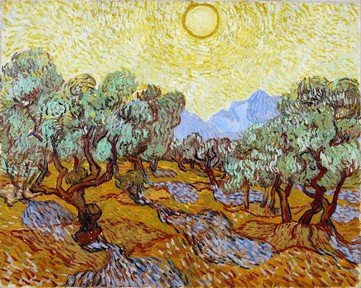Quiz Answer Key and Fun Facts
1. The most iconic painting on war and peace is probably "Guernica" by Pablo Picasso. It commemorates the bombing of a Basque village in 1937. What is the name of the air force unit that did this bombing?
2. "Mad Meg" is the title of a notorious painting representing a female personification of war. The title character is en route to hell, looting and killing all the way. Who made this painting in 1562?
3. In 1629, Peter Paul Rubens created the "Allegory on the Blessings of Peace" (also known as "Allegory of Peace and War"), which you can admire in the National Gallery in London. You'll find a very peaceful and prosperous family, which is protected by the Roman goddess of wisdom from harassment by Mars, the war god. What is the name of the protective goddess of wisdom? Please note that we are looking for the Roman name.
4. The sculpture "The Burghers of Calais" (1884-1886) commemorates the capture of this French city by the English army in 1347, during the Hundred Years' War. Who sculpted this group of citizens surrendering the keys of the city and begging for mercy?
5. A Spanish painter completed in 1814 two paintings that fit the theme of this quiz (artworks referring to war and peace). One of these paintings is "The Second of May 1808: Charge of the Mamelukes". I won't mention the other painting, which is far more notorious. Who was the Spanish painter of these tableaux, who also created a series of etchings on "The Disasters of War"?
6. Jacques-Louis David painted in 1784 a tableau with some heroic Romans. Three men in armour reach out for three swords held by an old man in a red cloak. At the right, two young woman deplore what is about to happen. What is the title of this painting?
7. Joseph Mallord William Turner completed in 1838 the painting "... Tugged to Her Last Berth to be Broken Up". You can find this painting in the National Gallery in London. I've left out in this title the name of this famous battleship. What is its name?
8. One of the most moving statues related to the theme of war and peace can be found at the German military cemetery at Vladslo, Belgium (near Dixmude).
This statue, entitled "The Grieving Parents" (also known as "The Mourning Parents"), shows us a father and a mother deploring their son's death in battle. Who was the artist who made this statue after the First World War?
9. The Russian sculptor Ossip Zadkine is probably best remembered for his statue "Destroyed City", a monument to commemorate the bombing of a city. In which city (the object of the bombardment in 1940) can you find this statue?
10. Apollodorus of Damascus is one of the very few ancient artists from whom some artworks still exist. This Greek architect is credited with the construction of the Pantheon in Rome, as well as with a monument to celebrate the submission of Dacia (a region corresponding roughly with Twentieth Century Romania) in 106 AD. What is the name of this monument?
11. Ambrogio Lorenzetti decorated the main room of the city hall of Siena with an "Allegory of Bad Government" and an "Allegory of Good Government". The room thus decorated held the seat of Siena's city government. This room has two alternative names: the "Sala dei Noveschi" ("Room of the Nine"), because there were nine city governors, and another name derived from one of the prominent figures on the "Allegory of Good Government". What is that other name?
12. One of the reliefs on the Arc de Triomphe in Paris, France, bares the official title "Le départ des volontiers de 1792" ("The Departure of the Volunteers of 1792"). However, this statue by François Rude has also an unofficial, shorter name. What is the more popular name for this statue?
13. A French sculptor, who worked during the Napoleonic times, completed the statue "Peace" in 1810 - just before his death. Who was this rather obscure French sculptor?
14. Paolo Uccello immortalized the "Battle of San Romano" that took place in 1432. Uccello made three paintings inspired by this battle that took all day. In which Italian Region did this battle probably take place?
15. The French sculptor Jean Goujon created a bas-relief that decorates a window in the Louvre in Paris. It depicts two female personifications. What is the English title of this bas-relief?
Source: Author
JanIQ
This quiz was reviewed by FunTrivia editor
CellarDoor before going online.
Any errors found in FunTrivia content are routinely corrected through our feedback system.
